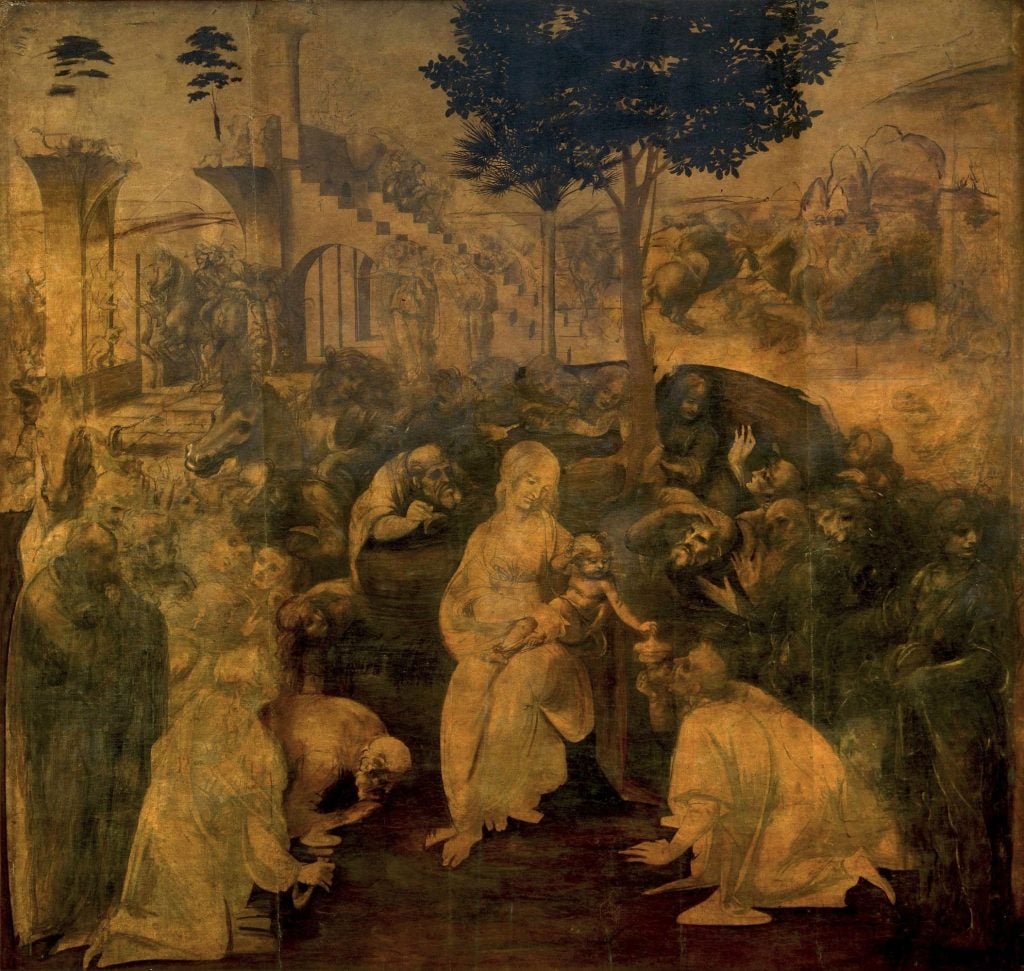Art World
Newly Restored Leonardo da Vinci Returns to the Uffizi Gallery
The painting makes its homecoming after spending six years at a conservation center.

The painting makes its homecoming after spending six years at a conservation center.

Caroline Elbaor

Leonardo da Vinci’s Adoration of the Magi (1481) is returning to Florence’s Uffizi Gallery with the exhibition “Magic Cosmos: the Adoration of the Magi Restored,” scheduled to run from March 28 to September 24, 2017.
The unfinished early work is the largest surviving panel of its type by the Italian master. Originally commissioned in 1481 as an altarpiece by the monks of the church of San Donato a Scopeto, Leonardo was forced to abandon work on it when he moved to Milan the following year to serve as court painter.
Ownership of the work was then taken by the ruling Florentine Medici family, who established the Uffizi Gallery a century later with the work as part of its vast collection. Conservators at the Opificio delle Pietre Dure conservation center in Florence just finished a six-year restoration of the panel. Leonardo’s Adoration of the Magi will now go on view alongside Filipino Lippi’s 1496 painting by the same name, which was commissioned by the monks as a replacement in Leonardo’s absence.
Along with the unveiling of the newly restored work, the Uffizi is planning to open exhibitions of works rescued from last year’s Italian earthquakes, as well as a series of Renaissance-inspired drawings by the Russian film director Sergei Eisenstein, in an attempt to augment its program with temporary exhibitions during typically low tourist seasons.
“We Must Make Haste! Marche 2016-17: Treasures Rescued and Treasures Still to Rescue” will exhibit salvaged works from, and in support of, Italy’s Marche region, which was hit by earthquakes last August and October.
Pieces from the Middle Ages to the 18th century sourced from damaged churches, monuments, and museums of the Ascoli Piceno, Fermo and Macerata provinces will be included. Proceeds from ticket sales will go towards reconstructing cultural heritage in the worst-hit areas.
The year will conclude with shows concentrated on “three true revolutionaries,” according to Uffizi director Eike Schmidt: Martin Luther, Leopoldo de’ Medici, and Sergei Eisenstein will take center stage in three separate exhibitions. “Eisenstein: the Image Revolution” will follow the Soviet film-maker’s “narrative revolution” arc dating back to his interest in Italian Renaissance art.
In a statement to the Art Newspaper, Schmidt said, “It is important to us not to have random contemporary shows but [to open] a new perspective on the historical works that people see in the Uffizi.”